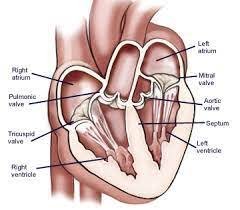Balloon Valvotomy: Mitral / Aortic / Pulmonary
Overview
Balloon valvotomy, also known as balloon valvuloplasty or percutaneous balloon valvuloplasty, is a minimally invasive medical procedure used to treat certain heart valve conditions by widening a narrowed or stenotic heart valve. This procedure involves the use of a catheter with a balloon at its tip to dilate the narrowed valve and improve blood flow. Balloon valvotomy is commonly performed on the mitral, aortic, and pulmonary valves.
1. Mitral Balloon Valvotomy:
- Indication: Mitral stenosis, a condition where the mitral valve (located between the left atrium and left ventricle) becomes narrowed, restricting blood flow from the atrium to the ventricle.
- Procedure: A catheter with a balloon is threaded through the blood vessels to the heart. Once positioned across the narrowed mitral valve, the balloon is inflated, stretching and enlarging the valve opening.
2. Aortic Balloon Valvotomy:
- Indication: Aortic stenosis, a condition where the aortic valve (located between the left ventricle and the aorta) becomes narrowed, impeding the flow of blood from the heart to the rest of the body.
- Procedure: Similar to mitral balloon valvotomy, a catheter with a balloon is used to dilate the narrowed aortic valve, improving blood flow.
3. Pulmonary Balloon Valvotomy:
- Indication: Pulmonary valve stenosis, a condition where the pulmonary valve (located between the right ventricle and the pulmonary artery) becomes narrowed, obstructing the flow of blood to the lungs.
- Procedure: A catheter with a balloon is guided to the pulmonary valve, and the balloon is inflated to widen the narrowed valve, allowing improved blood flow to the lungs.
General Procedure Steps:
- Access: The catheter is typically inserted through a blood vessel in the groin and threaded up to the heart under X-ray guidance.
- Balloon Inflation: Once the catheter is positioned at the narrowed valve, the balloon is inflated, stretching the valve leaflets and improving blood flow.
- Balloon Deflation and Removal: After achieving the desired valve opening, the balloon is deflated and withdrawn, and the catheter is removed.
Considerations:
- Balloon valvotomy is a suitable option for selected patients with specific valve conditions.
- The procedure is often performed in a catheterization laboratory (cath lab) by interventional cardiologists.
- Balloon valvotomy may provide symptomatic relief and delay or obviate the need for surgical valve replacement in some cases.
Complications: While balloon valvotomy is generally considered safe, potential complications may include damage to the valve, embolization of debris, bleeding, or irregular heart rhythms. The decision to undergo balloon valvotomy is made based on the patient’s individual characteristics, the severity of valve stenosis, and other medical considerations.




Contact Us
- +918530797300
- theheartclinic77@gmail.com
- FIYORILLA, Primrose, Sukhwani Complex, Vallabh Nagar, Pimpri Colony, Pimpri-Chinchwad, Maharashtra 411018